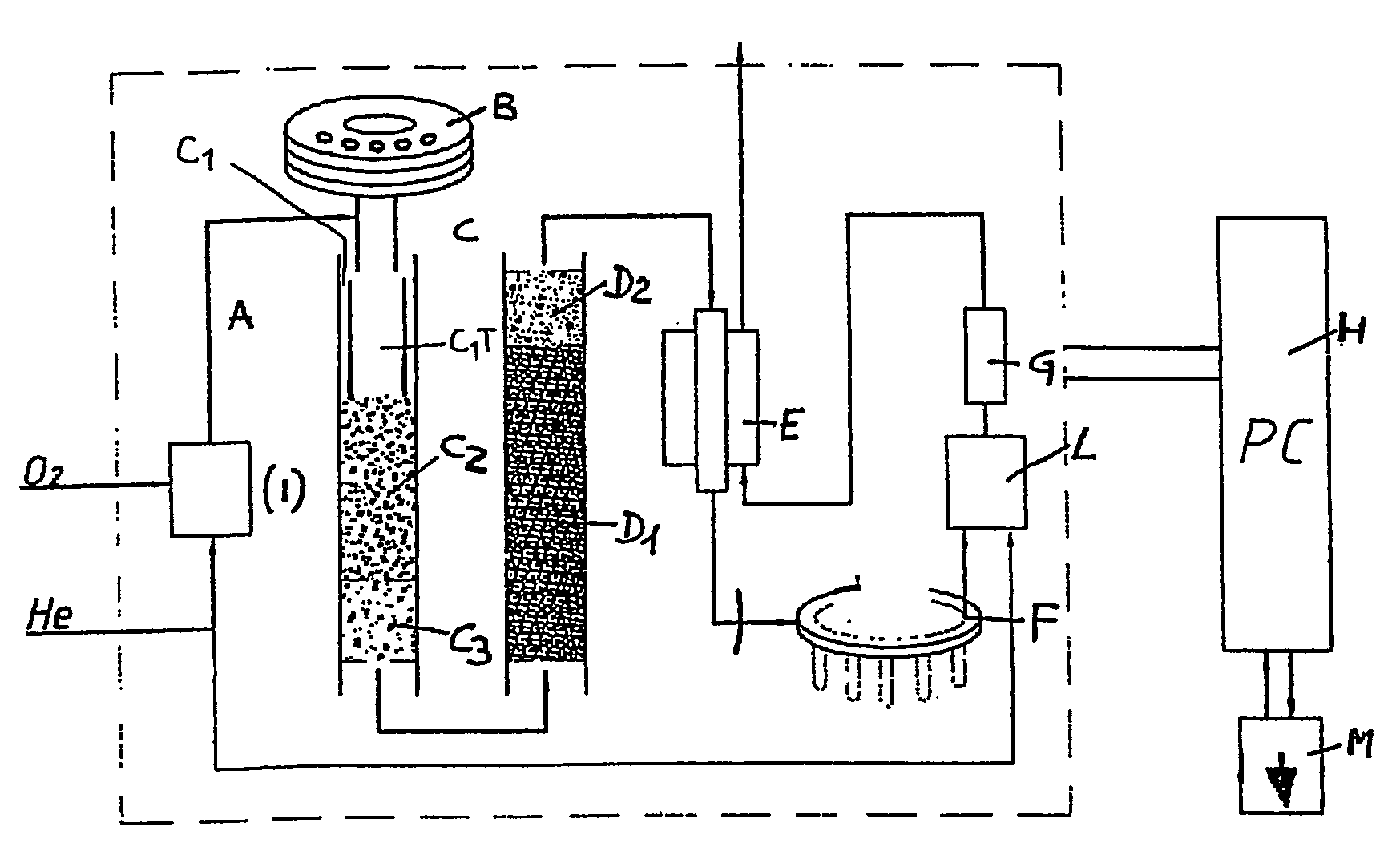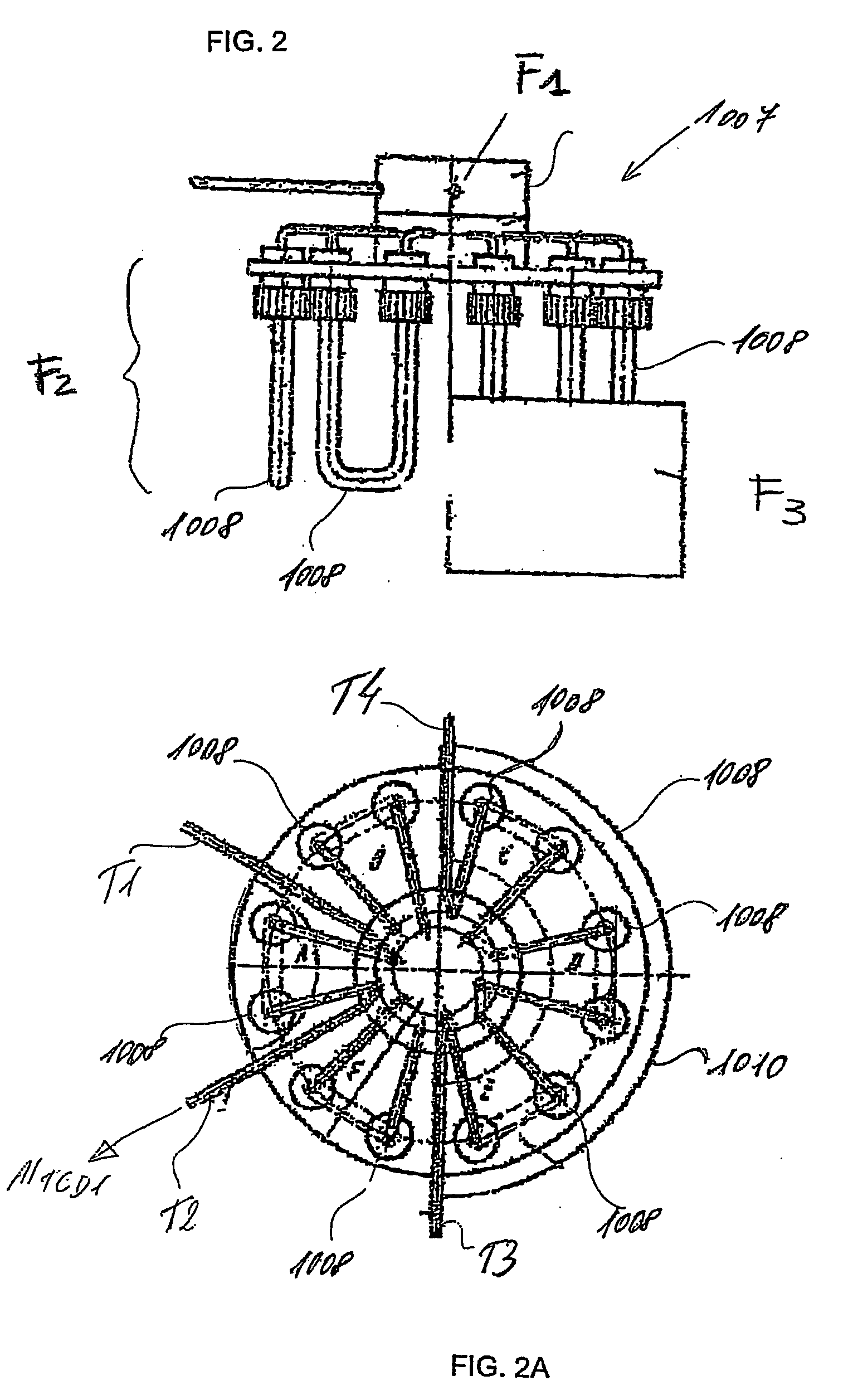Automated analyser for determining nitrogen derived from organic compounds
a nitrogen derived from organic compound, automatic technology, applied in the direction of chemical methods analysis, instruments, suspensions, etc., can solve the problems of pyrolysis residues in powder form, large quantities of toxic residues, and slow homogeneous gas phase combustion, so as to reduce the excess of oxygen inside the gas line of the analyser and easy removal.
- Summary
- Abstract
- Description
- Claims
- Application Information
AI Technical Summary
Benefits of technology
Problems solved by technology
Method used
Image
Examples
Embodiment Construction
[0051] Further advantages attainable with the nitrogen analyser of the present invention will be more evident to the person skilled in the art from the following detailed description of a particular embodiment thereof shown in said figures.
[0052]FIG. 1 shows a flow diagram of a preferred embodiment of the nitrogen analyser of the present invention.
[0053] In this figure A indicates the gas lines through which helium and oxygen pass upstream of the heterogeneous combustion reactor, while CO2, N2, water and helium, i.e. the carrier gas, pass downstream of the reduction reactor, only nitrogen and helium passing upstream of the detector.
[0054] In said figure, B indicates an automatic sampler preferably of 120 positions, consisting of three superposed carousels each comprising 40 positions.
[0055] The sampler is operated by a pneumatic device, which while allowing a sample to fall into the combustion reactor, simultaneously loads the next sample onto a piston-operated slide in the inte...
PUM
| Property | Measurement | Unit |
|---|---|---|
| angle | aaaaa | aaaaa |
| temperature | aaaaa | aaaaa |
| temperature | aaaaa | aaaaa |
Abstract
Description
Claims
Application Information
 Login to View More
Login to View More - R&D
- Intellectual Property
- Life Sciences
- Materials
- Tech Scout
- Unparalleled Data Quality
- Higher Quality Content
- 60% Fewer Hallucinations
Browse by: Latest US Patents, China's latest patents, Technical Efficacy Thesaurus, Application Domain, Technology Topic, Popular Technical Reports.
© 2025 PatSnap. All rights reserved.Legal|Privacy policy|Modern Slavery Act Transparency Statement|Sitemap|About US| Contact US: help@patsnap.com



